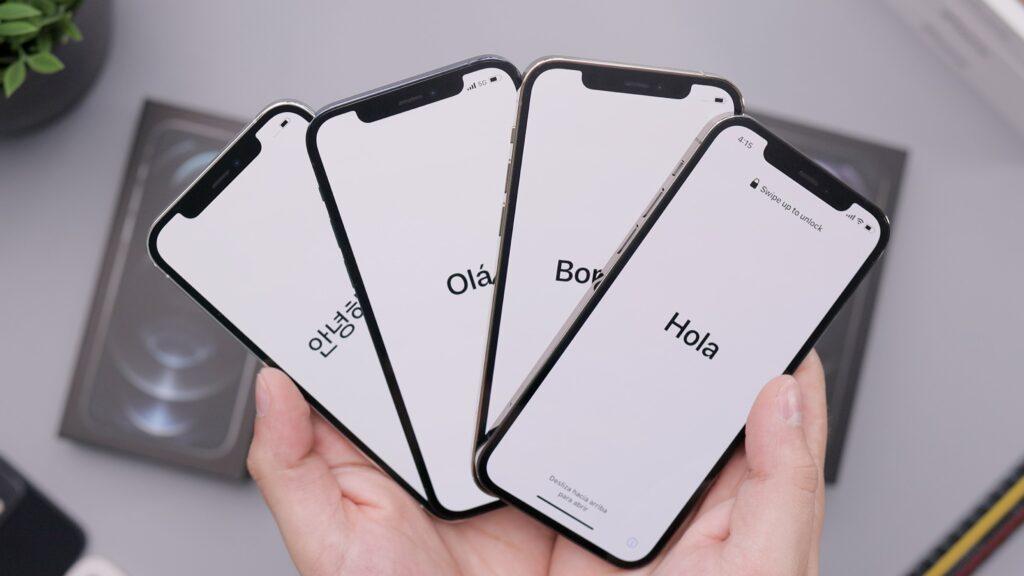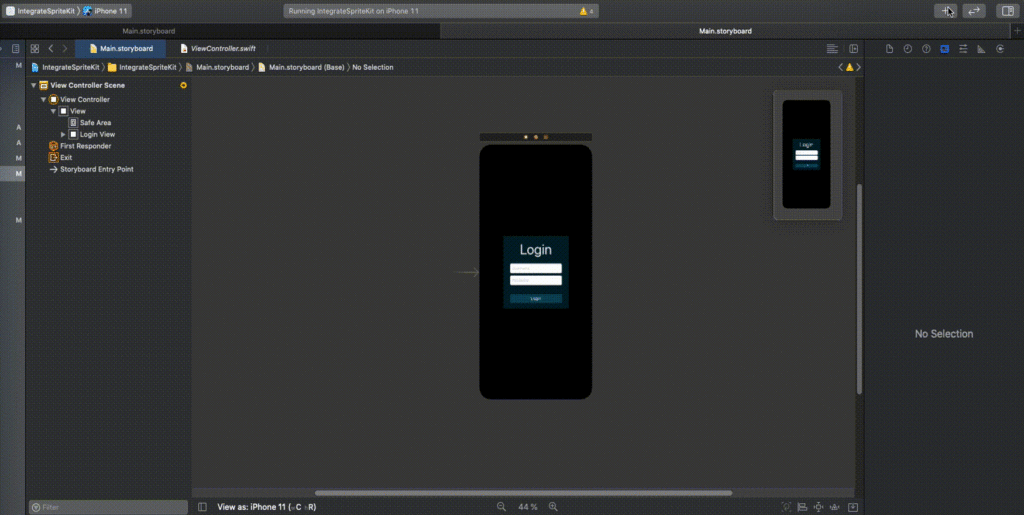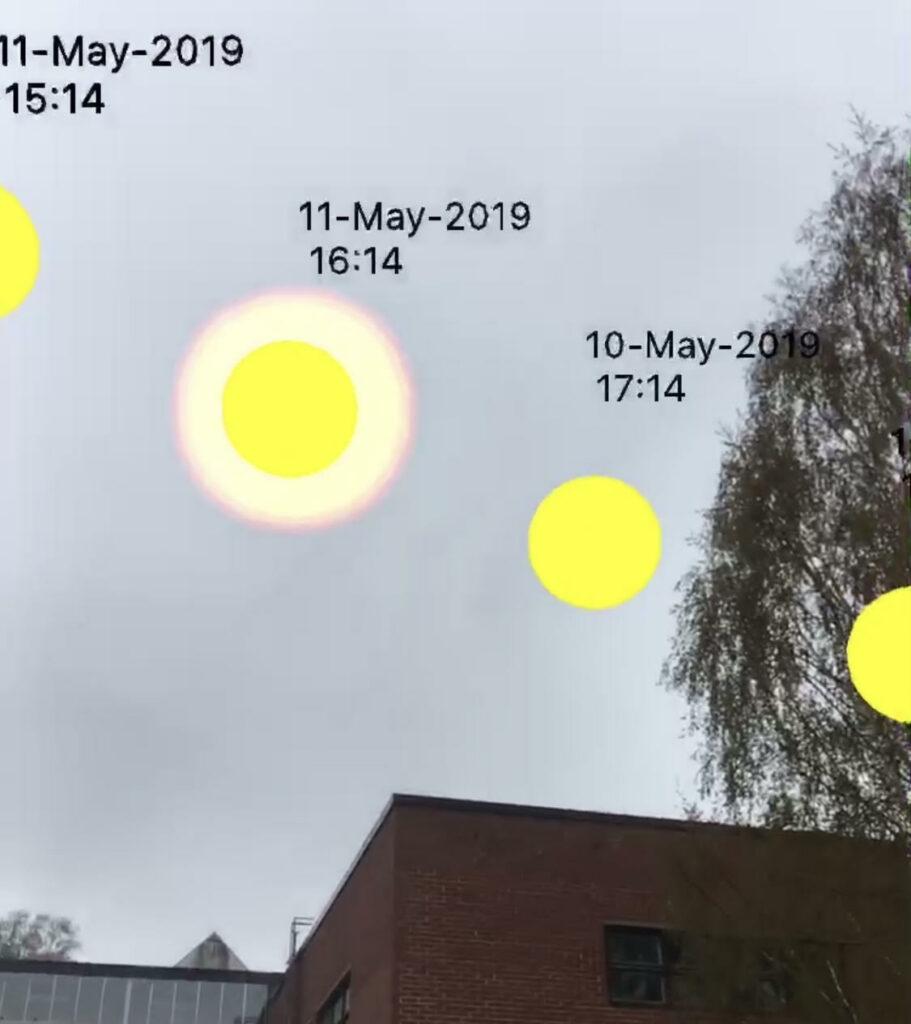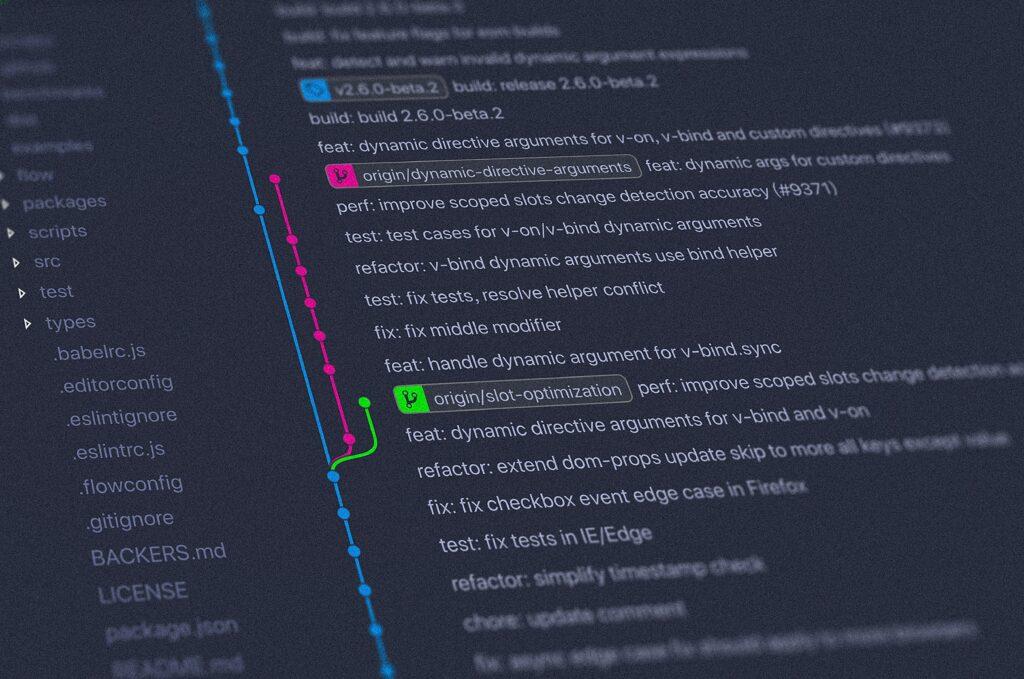Are you interested in becoming an iOS app developer?
What a great choice!
Developing mobile apps is a lucrative business.
iOS development involves solving customers’ problems using creativity and careful thinking.
Developing apps is both fun and challenging.
Mobile app development is still relevant and it is an in-demand skill to possess.
To become an iOS app developer, the most important skill you need is coding. Back in the day when iOS was a new thing, iOS developers would have to learn the notorious Objective C language. To make matters worse, the community was small and it was harder to get assistance.
This made developing iOS apps tricky.
In 2014, Apple tackled this problem by launching its own coding language called Swift. Swift is a Python-like programming language that is easy and fun to learn. Swift language is dedicated to iOS app development. It has become the go-to language for iOS mobile app development.
Nowadays the iOS developer community has grown into a large and supportive community of developers of all skill levels. This means becoming an iOS developer has never been easier!
In addition to coding, there is a bunch of useful skills you need to possess to be a competent iOS developer.
These skills include:
- Problem-Solving skills
- Swift Coding Skills
- Xcode Environment Skills
- Version Control Skills
- UI/UX Design Skills
As an iOS developer, you do not need to be a UI/UX expert. But still, understanding the basics never hurts.
On the other hand, if you are a solo developer, then you should also have some skills in UI/UX side too!
In this guide, you are going to learn how to become a job-ready iOS developer in a matter of months step-by-step. We are not going to focus on details, such as writing code or installing software. Instead, you are going to know what it takes to become an iOS developer and how to get there as quickly as possible.
After reading this guide, you should have the right mindset and information to become a successful iOS dev.
This post contains affiliate links.
1. Understand Why iOS
When it comes to developing mobile apps, there are many ways to go.
You could become an:
- iOS app developer
- Android app developer
- Cross platform developer (iOS & Android)
- Game developer (iOS & Android)
Before you get started, make sure to understand why you want to become an iOS developer over something else.
Of course, you can try out different areas of software development before choosing one to stick with. However, the main goal of this article is to guide you toward becoming an iOS app developer.
From this point on, I assume you have chosen to focus on iOS. Although most of what you learn applies to mobile app development in general, be it iOS, Android, or any other platform.

2. Learn What It Takes
The biggest challenge in becoming an iOS developer is learning how to code.
To become a competent developer, you need to be able to solve customers’ (users) problems using code. This is the ultimate goal.
As a beginner, it is important to understand coding is a time-consuming skill that takes months of hard work to learn. But it definitely is something anyone can learn if they are passionate about it.
If you have no previous background in programming, expect:
- Programming to feel hard.
- To feel like giving up.
- To feel dumb.
- To spend hours every day with very little progress.
To build even some basic iOS app, such as a snake game, expect to spend weeks or months practicing coding.
Luckily, learning the iOS app development language Swift is easy. It is a beginner-friendly language. Swift was intentionally designed as an easy-to-learn programming language to lower the barrier to become an iOS developer.
In addition to coding, you need to learn how to use Xcode, the iOS app development environment.

In Xcode, you build your app’s user interface by dragging and dropping pre-built components into the interface builder. Then you wire these components to interact with your code. This is handy as you do not need to code everything from scratch.
Anyway, it takes some time to learn how to use Xcode effectively.
Last but not least, you should also learn some UI/UX design skills. This is especially handy if you are building apps as a solopreneur and cannot afford a professional UI/UX designer yet.
However, if you are deemed to become a job-ready iOS developer, then you do not need to worry about designing the UI/UX.
To develop iOS apps, it is recommended to own a Mac. However, if this is not something you can afford, there are alternative solutions, such as remotely using a Mac on Windows or any other OS.
At this point, you should have a great understanding of what it takes to become an iOS developer. Next, you are going to see how to maximize learning iOS development to become a job-ready professional quickly.
3. Start with the Basics of Swift
Before starting with actual mobile app development, you should focus on learning how to code.
I recommend you solely focus on coding for a month or two. Do not pay attention to anything else during that time not to get confused. When you have developed some basic coding skills, you are ready to move on to building iOS apps.
3.1. How to Learn Coding
Learning how to code for free is possible.
There are great free resources all over the internet. However, if you want to speed up your learning process, you should consider spending an extra buck on joining a high-quality course or even a bootcamp.
Here is a list of 8 Best Swift & iOS Development Courses.
No worries, it does not have to be a physical course. All teaching happens online.
The reason why I find bootcamps so beneficial is that they set the pace. The professional iOS developers who teach the course know exactly what you should focus on. This turns you into an iOS developer quicker than solo learning from free resources with no schedule or assistance.
Also, spending money on your career incentivizes you a bit more.
No matter how you choose to learn to code, there is one mistake to avoid. Let’s talk about it next.
3.2. Avoid this Mistake
There is a big mistake that beginner coders usually make: Watching tutorials without writing code.
If you only watch tutorials, read books, or attend lectures, you are not going to learn how to code. You have to write code to learn to code.
I suggest you write each line of code you see in a tutorial. More importantly, make sure to understand each line of code you ever write.
Now that you know how to code, let’s discuss how much time you should spend coding.
4. Practice Every Day
To learn quicker, practice every day. This applies to anything in life. If you think about professional athletes, for example, they train every day for tens of years.
This is no different in iOS app development.
Before you can get a job, you need to dedicate countless hours to writing code. The best way to learn is to practice every day. When you start, make sure to spend a couple of hours writing code every day!
This way you can learn a lot only in a couple of months.

Speaking of learning quickly, let’s have a look at how developer communities can help you learn even faster.
5. Join the iOS Developer Communities
A developer community is essential to learning any programming language. This is because the help is readily available anywhere and at any time.
iOS development is not a new thing anymore. This means it has had time to grow into a big, supportive, and mature community. As a beginner developer, this is great news for you!
5.1. Where Can I Find Communities
There are great iOS development communities you can join to.
To find these communities, join platforms like:
In particular, look for spaces with keywords like “iOS development” or “Swift programming” or similar.
5.2. Benefits of Developer Communities
In addition to staying in touch with like-minded people, iOS development communities can help you overcome obstacles when it comes to developing apps.
You can ask questions and get answers quickly. Even quicker than you thought.
If you write a piece of code and see an unexpected error, chances are someone else has had the same problem in the past. In other words, there is a chance someone has asked about it in a community. More often than not, the question has been publicly answered.
So all you need to do is Google up your issue and most likely find a solution in a matter of seconds. This is great because you do not need to spend hours scratching your head reading some scrappy manuals. Of course, these communities are much more than quick help.
You can for example:
- Connect with people.
- Invite collaborators.
- Share your work.
- Help others.

6. Learn by Teaching Others
Some people say “You do not know how it works before you can teach it.”
Sometimes you might face tricky concepts when learning to code. This is a great opportunity for you to shine.
If you find a particular concept difficult/poorly explained, chances are others felt the same way. It is your turn to flip things around. In addition to learning the concept, teach it! This forces you to spend time learning the topic well enough to confidently explain it.
And no, I do not mean physical teaching. Instead, you can write well-thought notes on the topic as if you were to teach it to someone. If you want to take it a step further, you can publish the notes as a forum post or perhaps even a blog post.
This way you kill three birds with one stone:
- You learn the concept well.
- You get to teach others and give back to the community.
- You get your voice heard in the community.
7. Keep Asking Questions
Never stop asking questions.
Even the most experienced iOS developers ask questions every day.
Software development is something where it is not a shame to use Google when working. As a matter of fact, software development would be almost impossible without Googling every day.
Anyway, there are many ways to ask questions as an iOS engineer:
- Googling
- Asking a community
- Asking a more experienced developer/teammate
Asking questions is the only way to learn things quickly. It does not make sense to spend hours or days scratching your head on something that the person sitting next to you could do in minutes.
Make sure to learn while asking to not need to ask about the same thing next time.

8. Solve Problems with Code
Any form of software development boils down to solving problems with code.
Do not be a programmer. Be a problem solver.
This means you should not write code for the sake of coding. Instead, you should write useful code. As a beginner, start solving problems with code right from the get-go.
Start building projects that solve a problem that is meaningful to you or someone else. It guides you in the right direction as a software developer. More importantly, when you apply for a first job, you can showcase your projects to your recruiters. You can impress them by showing them you built an app that is actually useful.
Also, do not be afraid to reinvent the wheel. As a beginner, it is hard to solve or even imagine a problem that has never been solved before. This is fine. Just remember to start adapting to the problem-solving mindset early on.

Working as an iOS app developer is all about solving problems, either in the existing app or by building new apps for the customers.
For instance, your task considering an existing application could be:
- Improve user experience by speeding up the loading process of messages.
- Add alerts to prevent users from accidentally deleting content when leaving the app.
If you are looking to build the next viral app, the app itself needs to solve a problem.
There are all sorts of problems where it can be beneficial to build a mobile app.
For instance:
- A tennis club wants to build a mobile app for booking tennis courts easily with mobile devices.
- An athlete wants to track their progress and dieting.
- You to play a funky mobile game that does not yet exist.
To take home, always solve problems with your code.
9. Learn How to Use Version Control
Version control makes developing software possible as a team.
In a version control system, developers can create branches that act as copies of the main application. They can then independently work on their branch without messing up others’ code.
When the changes are done, the developer can merge the branch back to the original app. In other words, a proficient iOS developer does not send code files over WhatsApp or email.
Version control is not only useful in teams but also when solo-developing software. It is inevitable to learn how to use version control at some point. So why not start right now?
Let’s briefly discuss the benefits and use cases of version control to further convince you.
9.1. Version Control in a Nutshell: Why Is It Useful?
As a beginner, you can think of version control as CTRL+Z on steroids.
It is a system that allows you to go back in time to see what your code looked like in the past. Also, you can revert your app back to where it was.
However, there is much more to it.
When you are building a mobile app, you need to have a system that keeps track of the project and its history. Version control is a system that keeps track of the versions of your application. Even if you change one line of code, you essentially create a new version of the app.
By default, the information is not saved anywhere. You can only use CTRL+Z to go back in time. But that is not practical. Instead, whenever you start an iOS app project, you should put it under version control.
Read also What Is Version Control
9.2. Git: The Most Popular Version Control System
The most popular version control is called Git. Its cloud-based hosting system is called GitHub. When you use Git, you can push the project into the cloud in GitHub. So in a sense, GitHub acts as a backup system for your code project as well.

You can also invite collaborators to your GitHub projects to develop your project.
Your GitHub projects can be either public or private. When you create public GitHub projects, the developer community can freely access your project. Sharing a public GitHub project is a great way to share your projects with your recruiters.
9.3. Learning Version Control Takes Time
Learning how to use version control takes time.
Version control requires you to remember and understand a bunch of commands and principles.
git pull git checkout login-color git add frontpage.html git commit -m "Change the color of the login screen." git push origin head
It is helpful to learn version control before starting an iOS developer position. The best way to learn is by watching guides and more importantly, adding your projects under version control early on.
10. Take Breaks to Refresh Your Thoughts
To maximize learning, you need to work optimally. This is not an iOS development thing. It applies to any form of studying or working. Focus on eating, sleeping, and working on a suitable schedule.
However, this is not a lifestyle/health blog, so we are not going there.
Perhaps the most important thing to remember when writing code is to take breaks. When it comes to studying, you commonly hear people suggesting the 52-17 routine.
- 52 minutes of hard work.
- 17 minutes break.
- Repeat.
It is not an exact science when it comes to taking breaks. However, taking a break can benefit you in many ways.
You can refresh your thoughts by taking a break. This can help you tackle the problem from a completely different angle.
If you are working on a tricky problem, it is not going to get any easier by sitting for hours and hours straight. After a nice break, you can see the problem in a completely different light.
11. Apply for a Job as Early as Possible
Remember to apply for a job early in your career.
No matter the experience level, you are not going to feel like a “good enough” developer when applying for the first job. Thus it is important to start applying early on.
Also, the best way to learn iOS development is by getting a real job as a developer. The recruiters understand you are a beginner. If you tell them you do not have experience from previous companies, they will not expect it from you.
Instead of years of experience, they are looking for passion and potential. The best way to showcase this is by showing your own iOS projects discussed earlier.

Where to Go From Here?
Now you understand what it takes to become a professional iOS developer.
But I did not teach you how to code, or even how to install the mobile app development environment. Reading this article was the easy part. Next, you should get your hands dirty and start learning to code. Put everything I described above into your day-to-day use!
Here is a list of awesome Swift courses you should consider. These courses get you from zero to hero in no time.
Also, I highly recommend reading How to Develop an iOS App from 2021. This guide gives you a better in-depth look at how to turn an idea into a full-on mobile app.
Thanks for reading.
Happy coding!
Read Also
Did you know you don’t need to learn how to code to build apps? Check out this list of the best no-code app-building tools.
Here are some other awesome resources for aspiring developers: